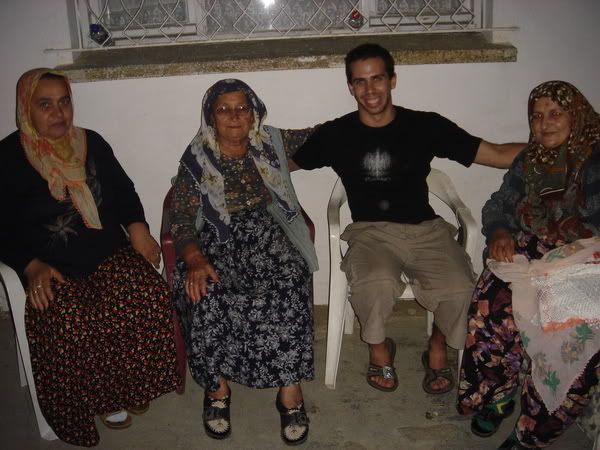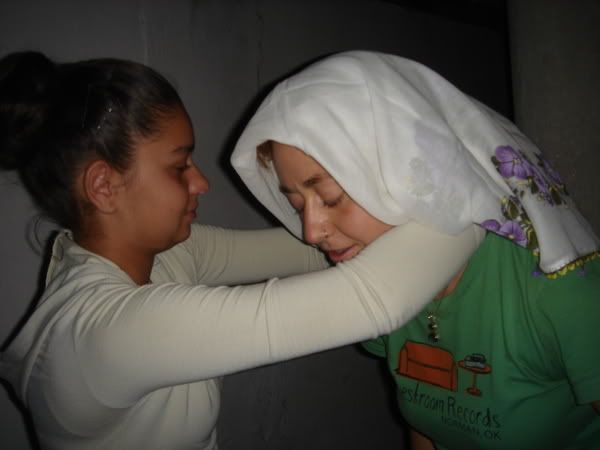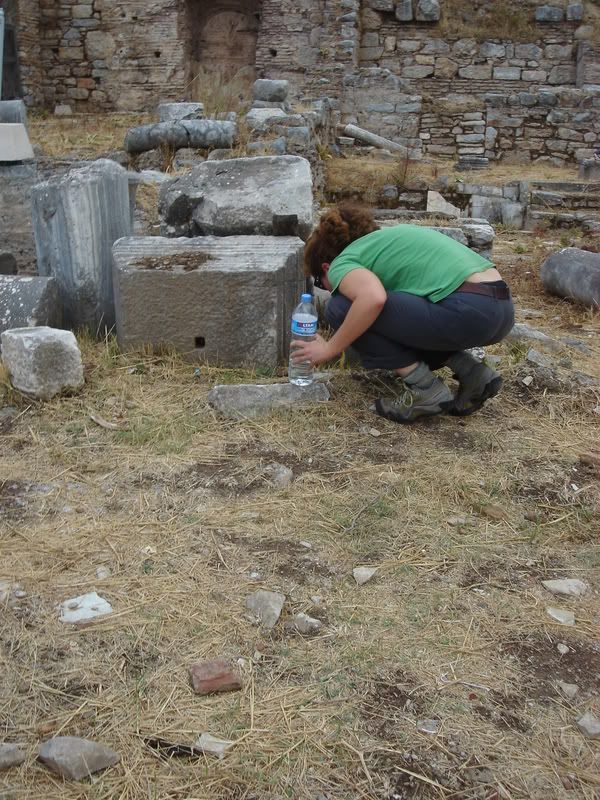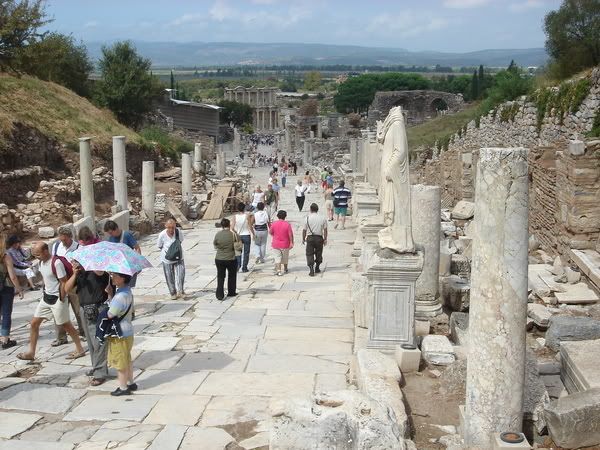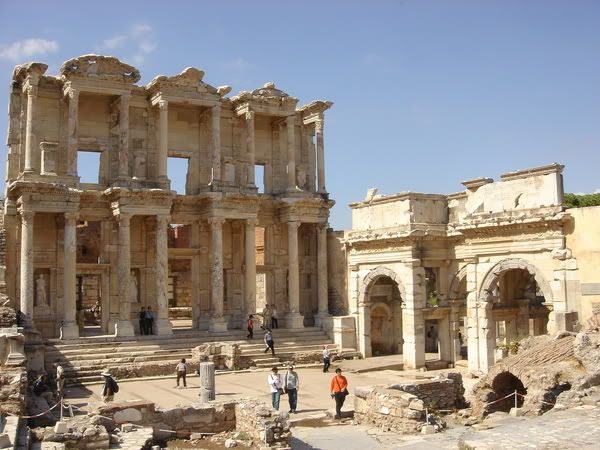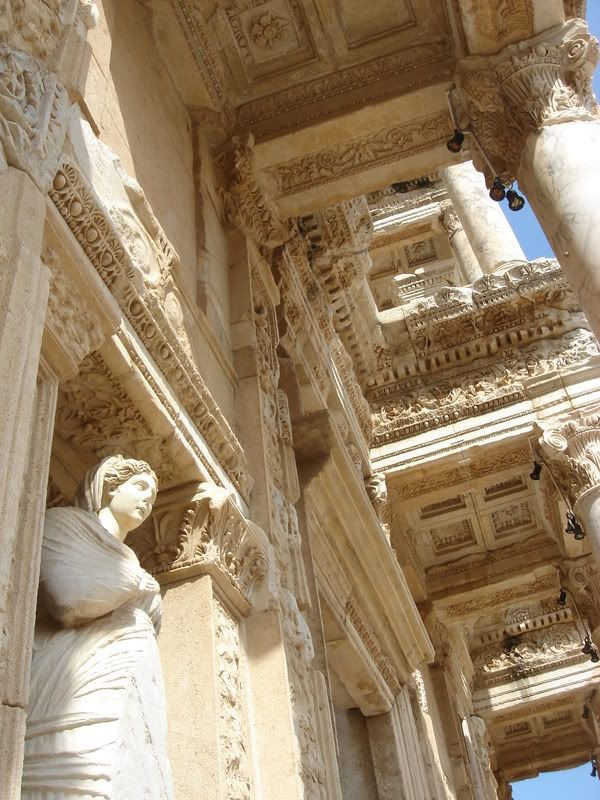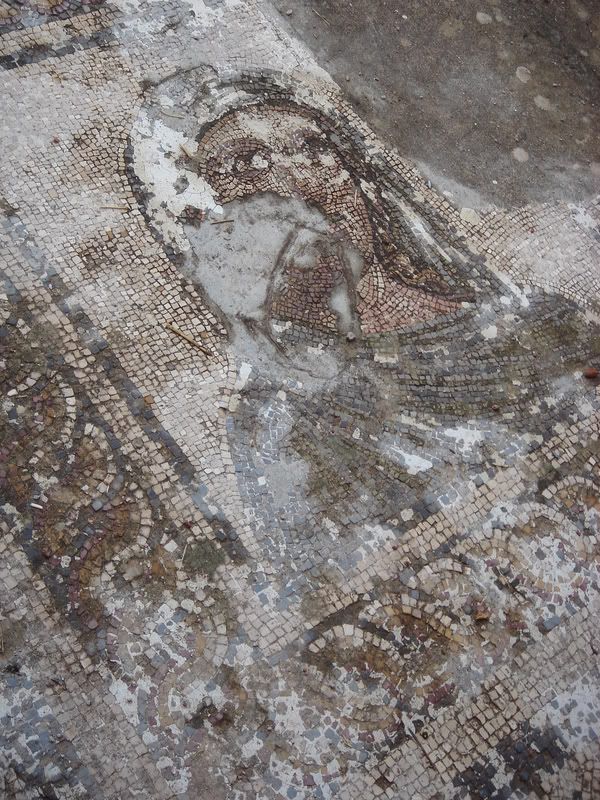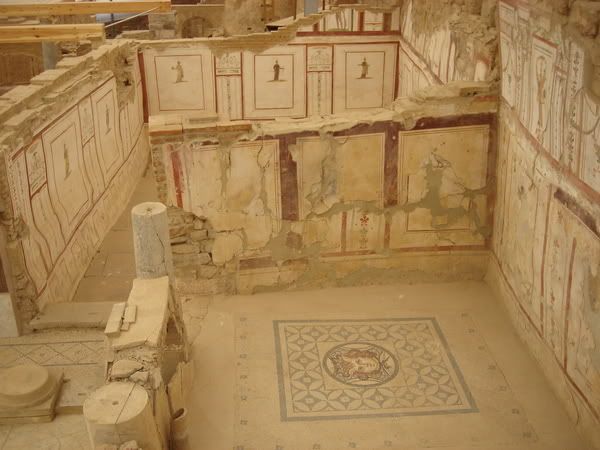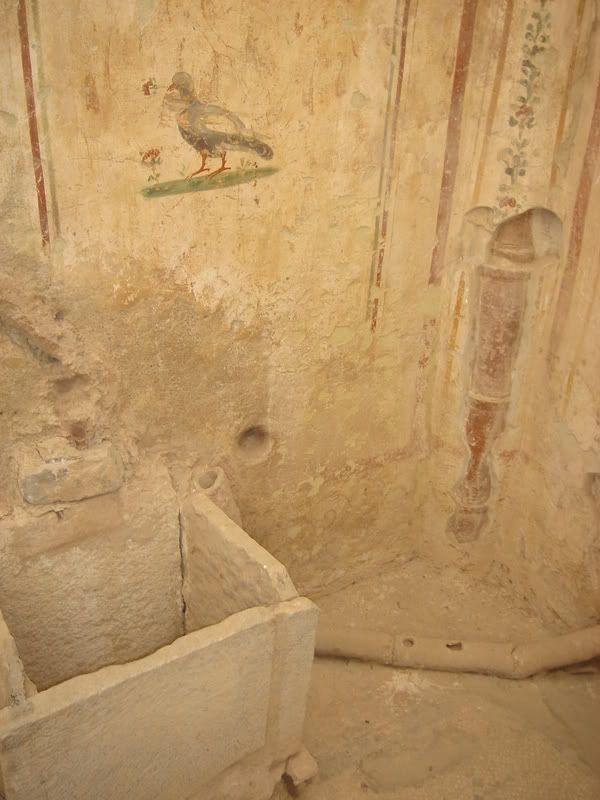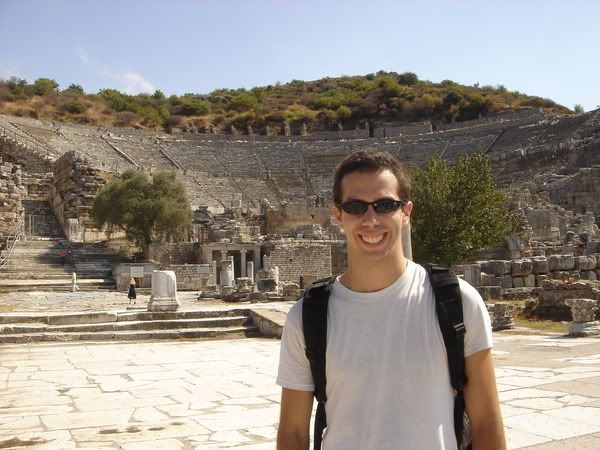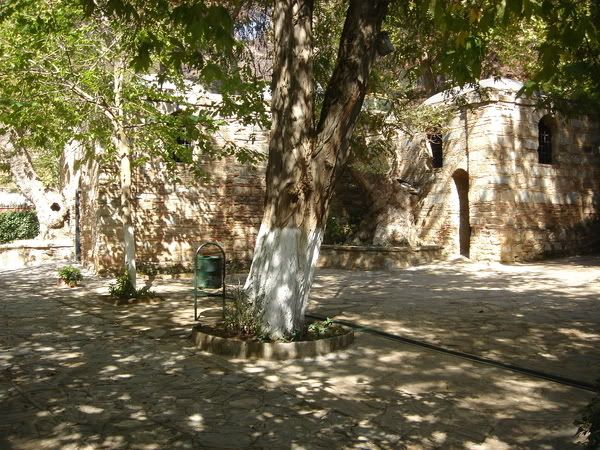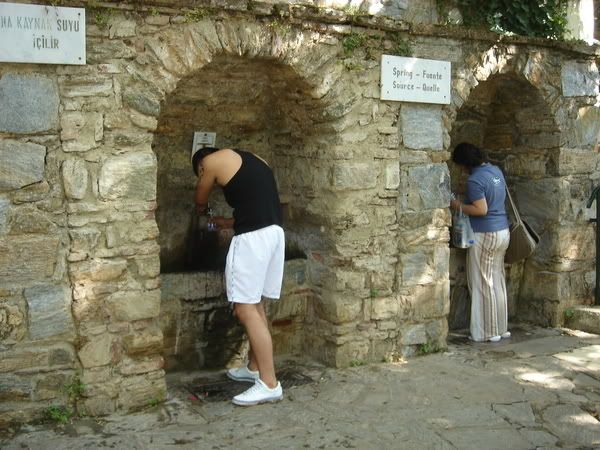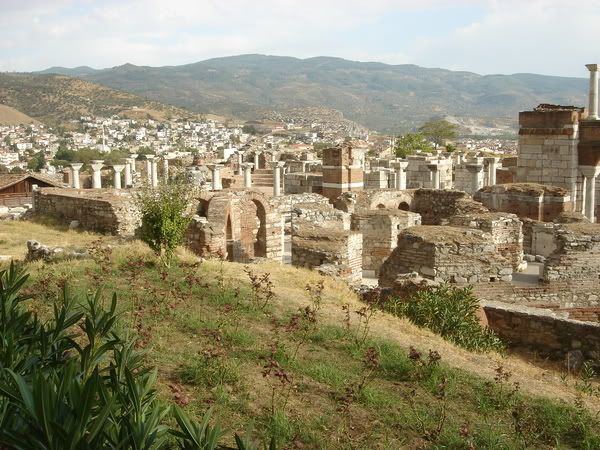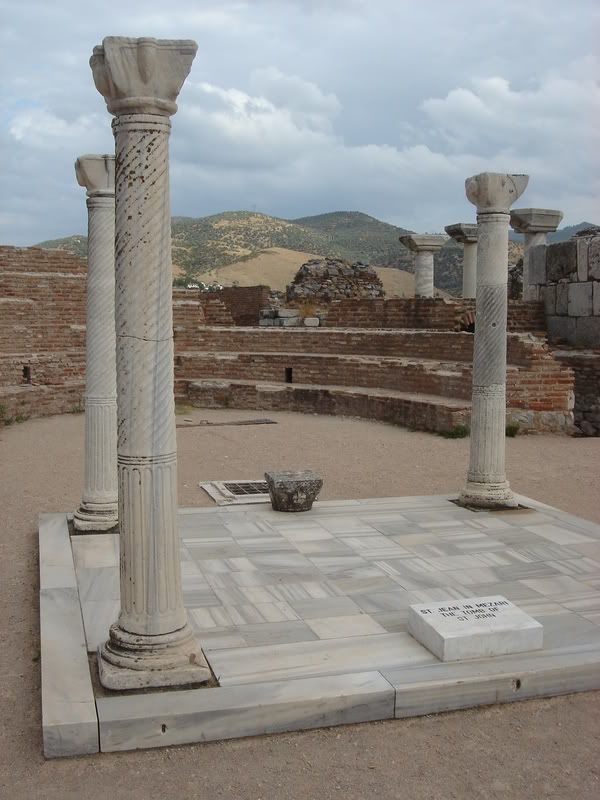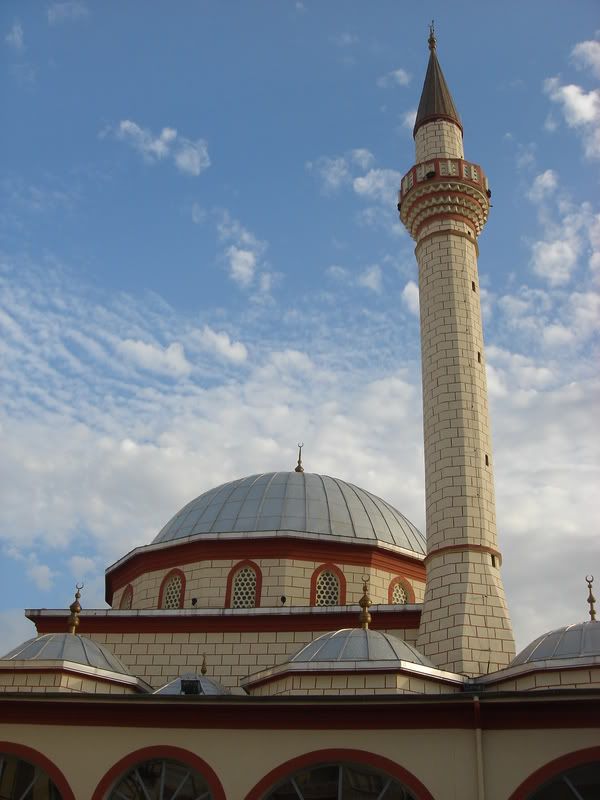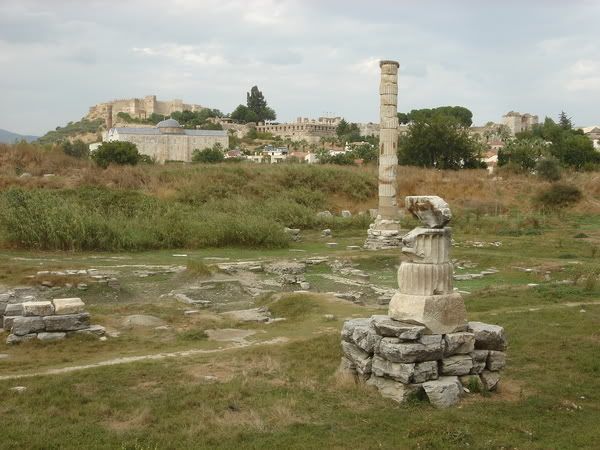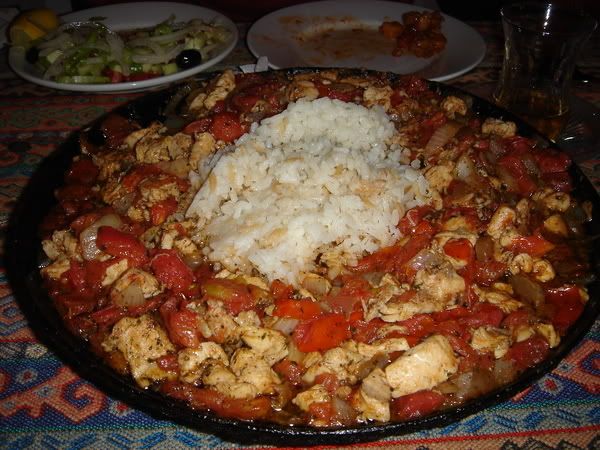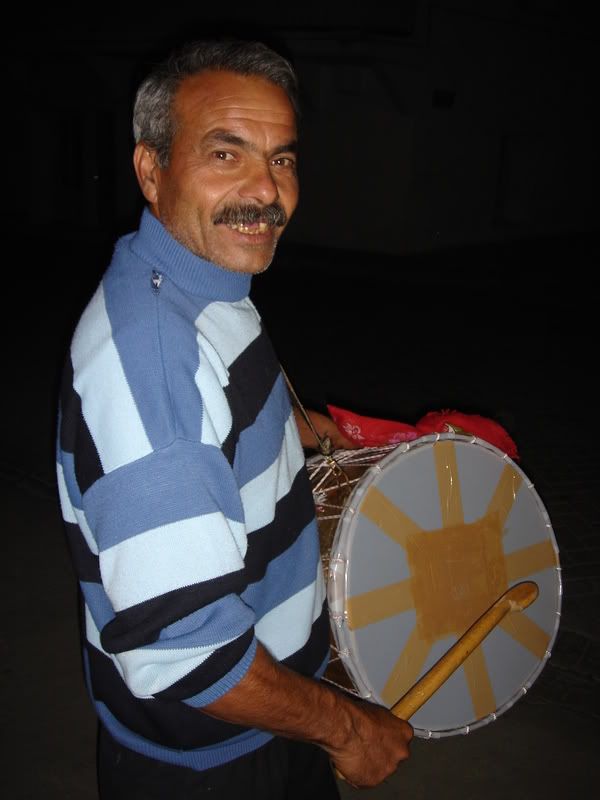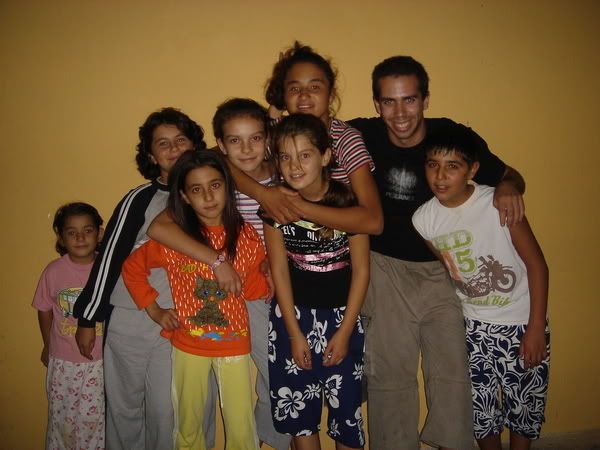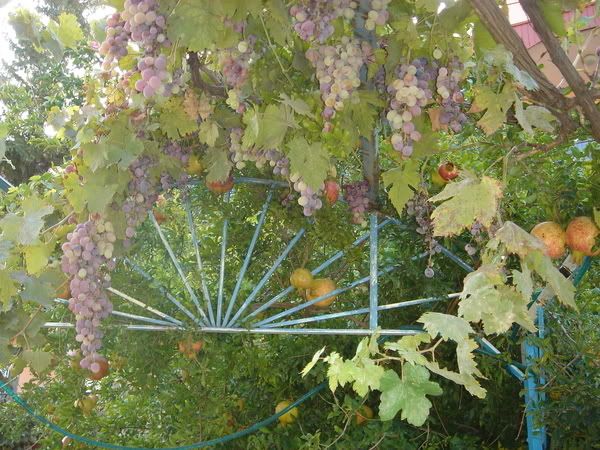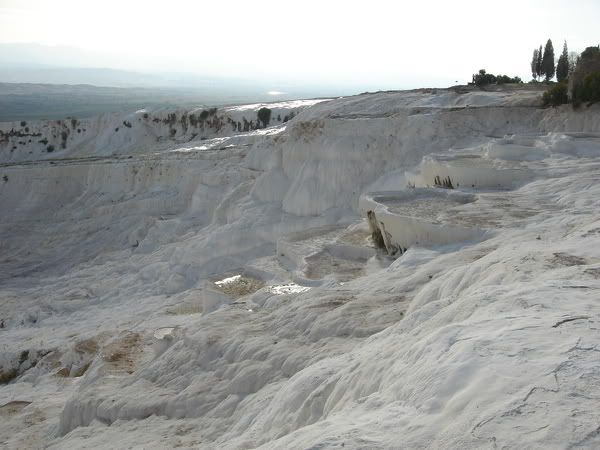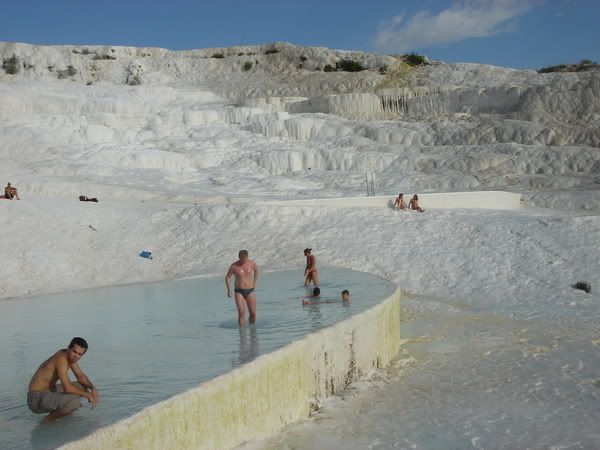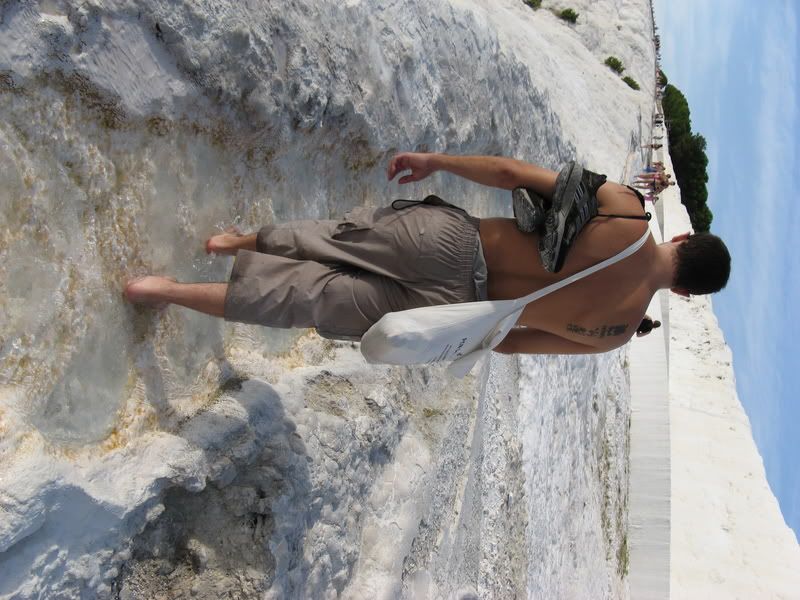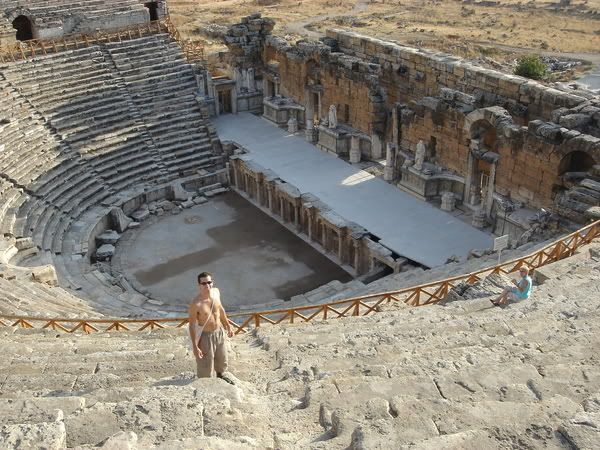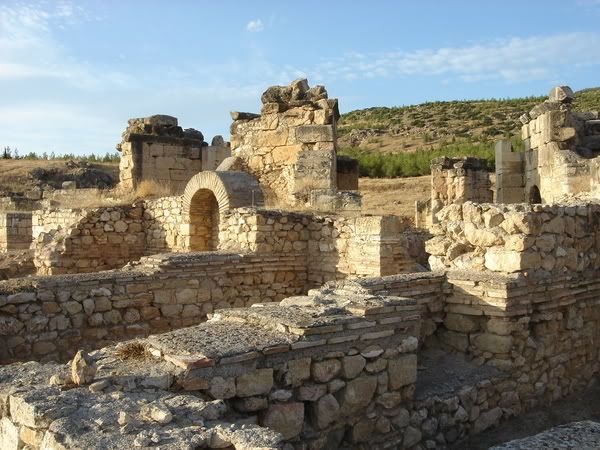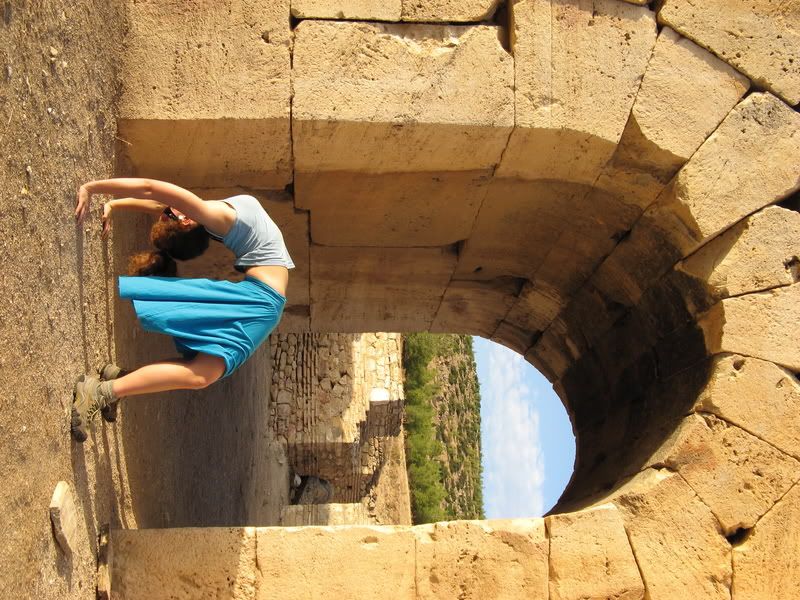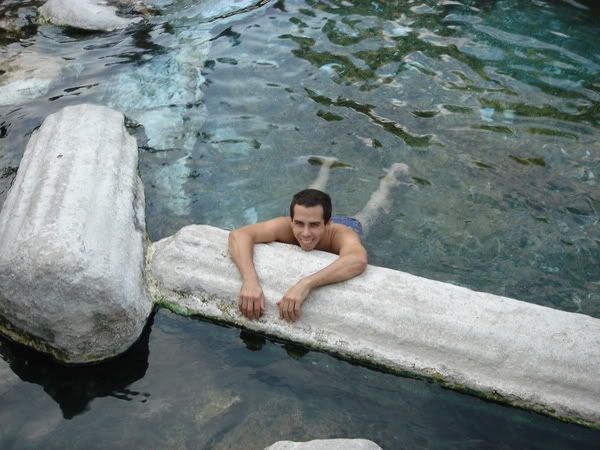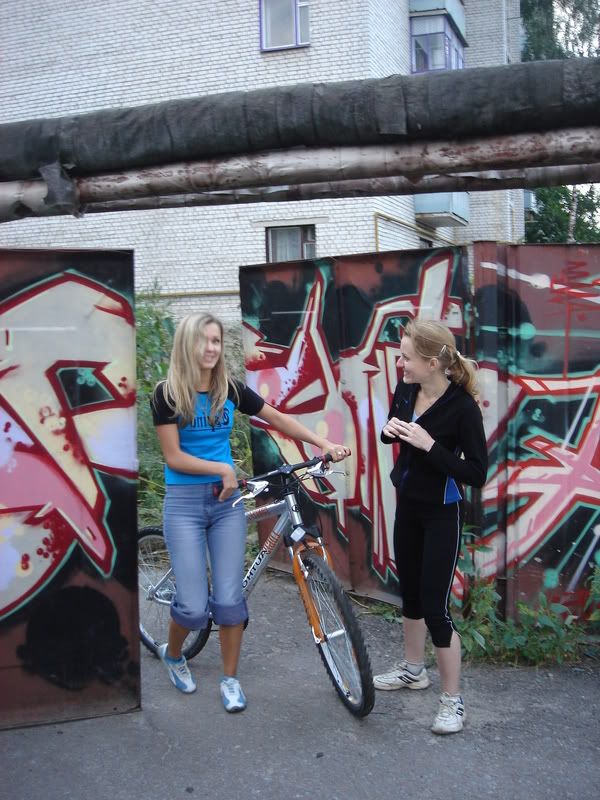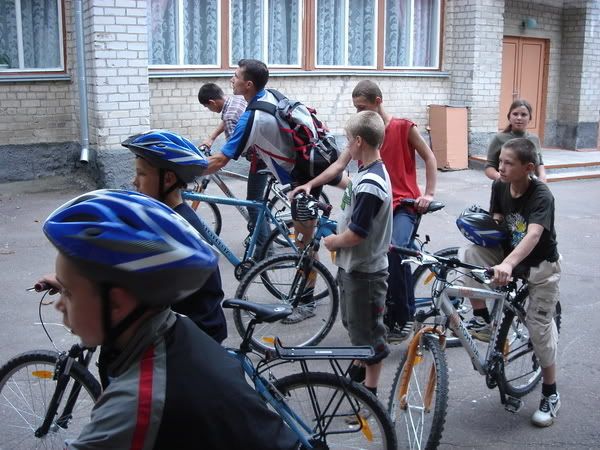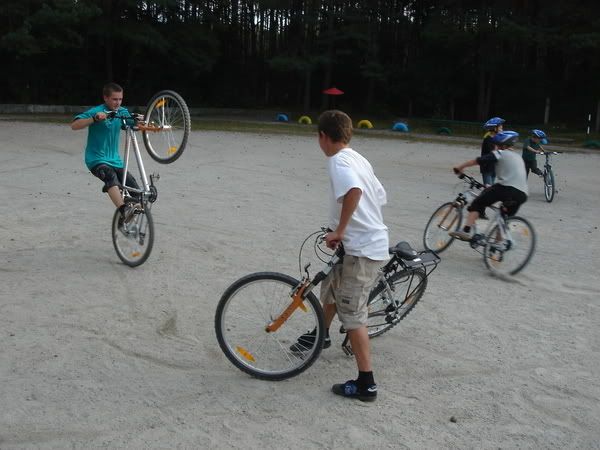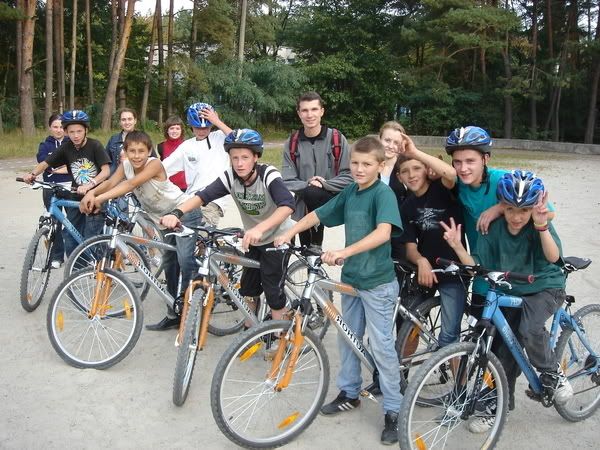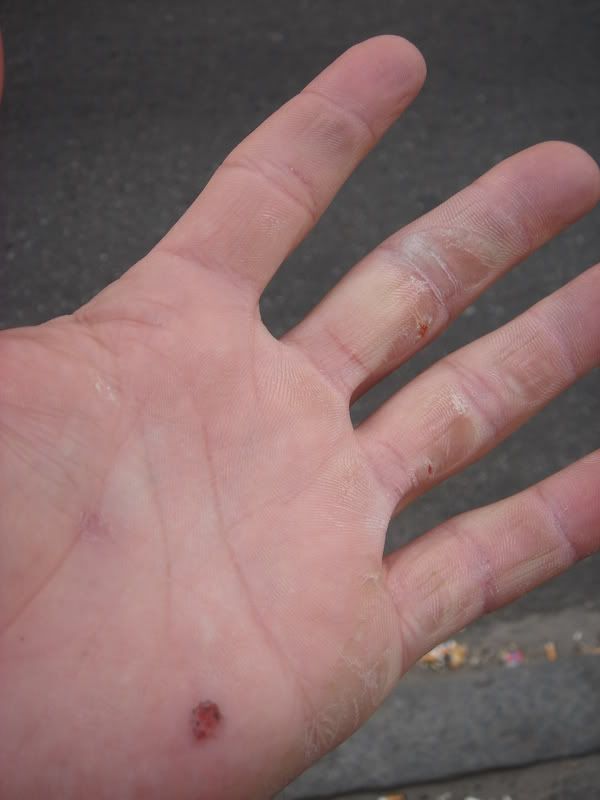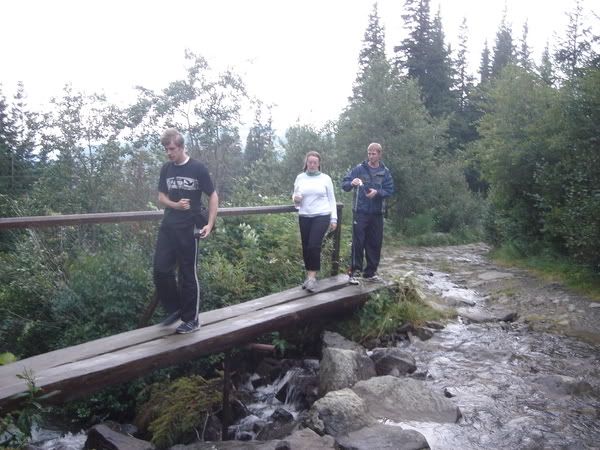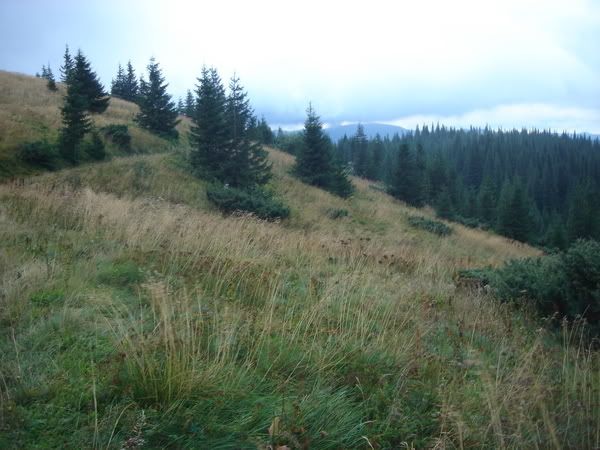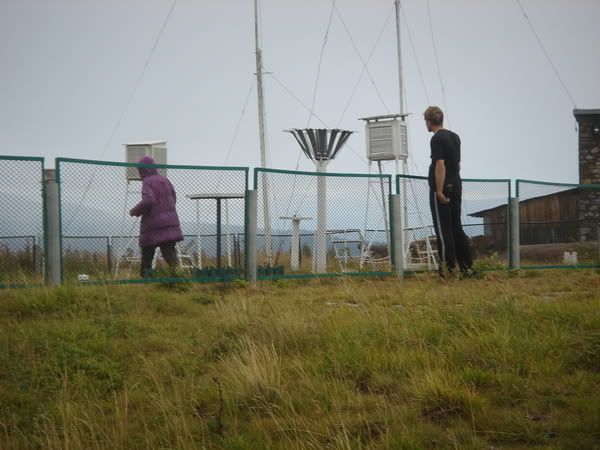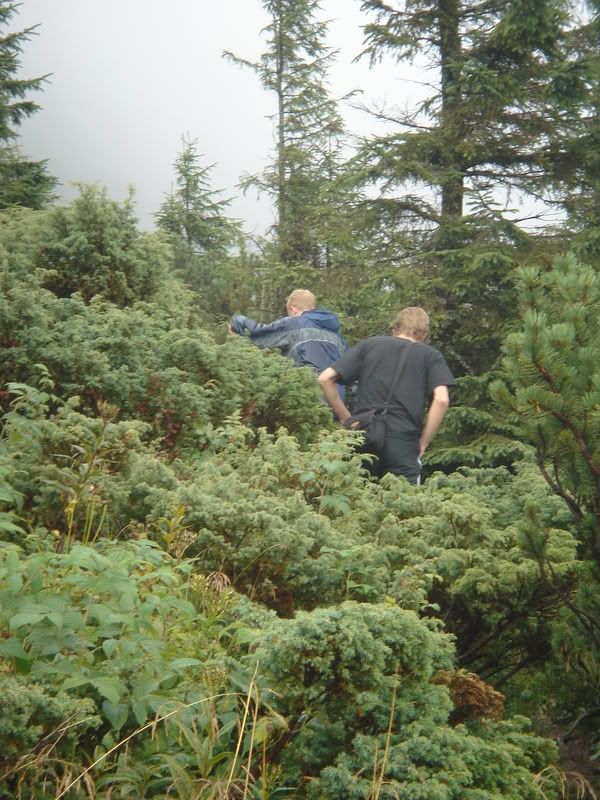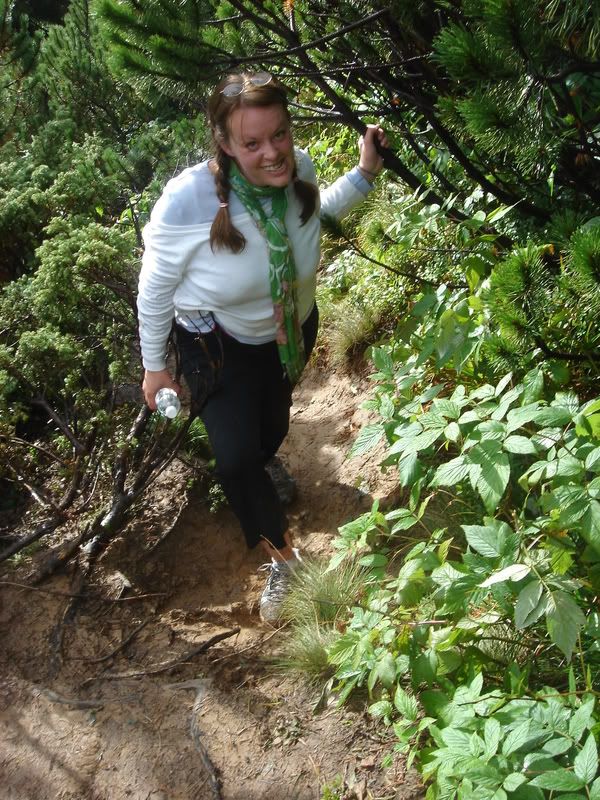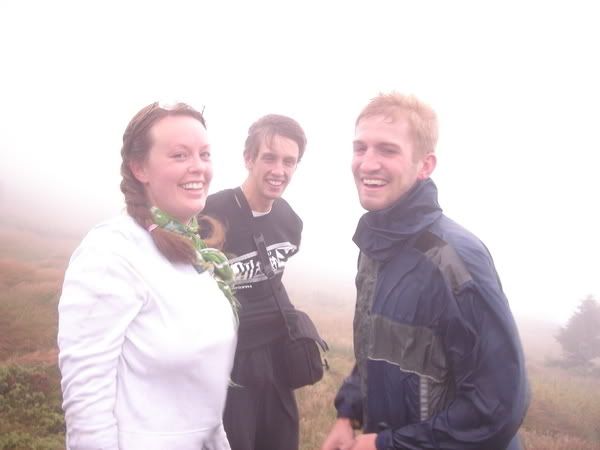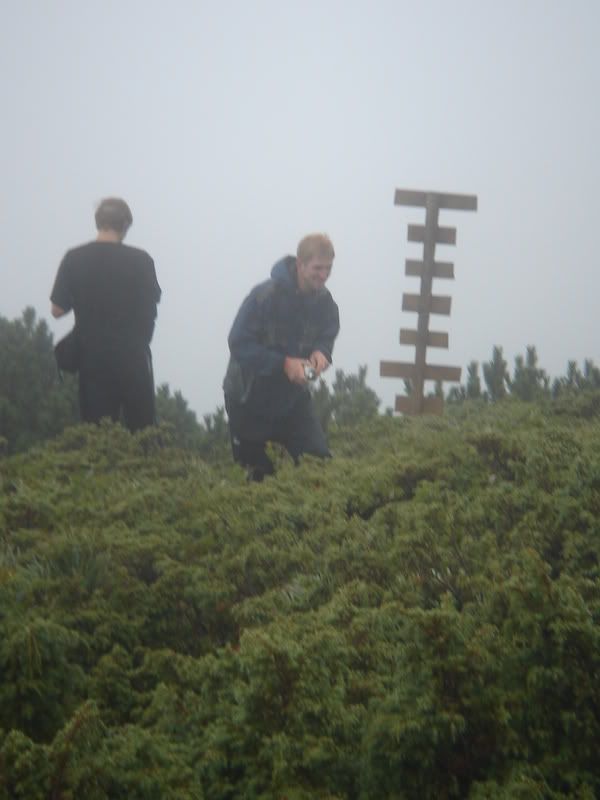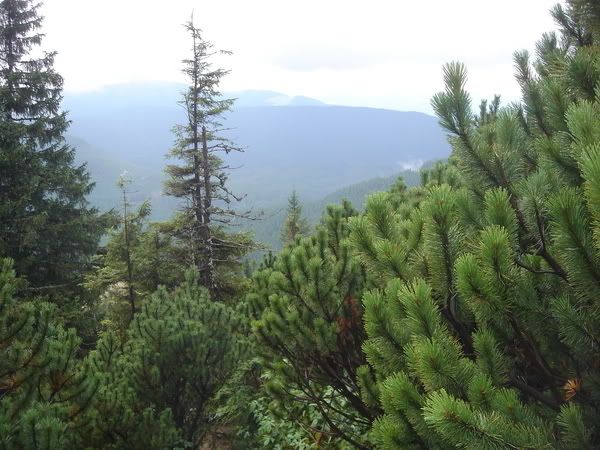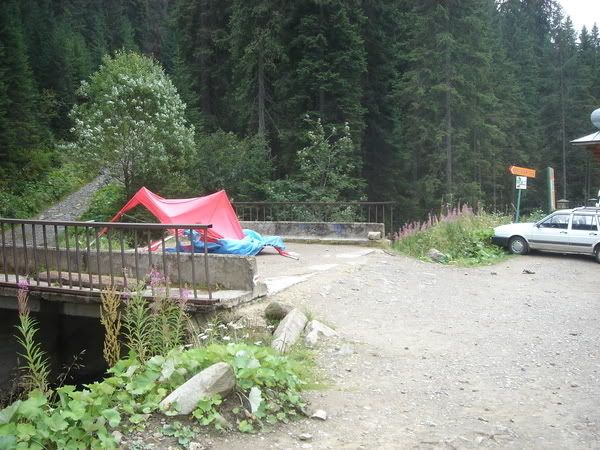I have oil on me because it was put there for half an hour by a man wearing only a towel. This was in a Turkish bath, so Jerry Falwell (I know you read this), you can reast easy. The visit to the Turkish bath (Hammam) was the third to last thing on a long itinerary. It was pretty cool: sauna, then soap massage and getting rubbed down with a coarse glove followed by rinsing and then that oil massage (Sarah opted for a pedicure instead of the massage). I found it pays to be an attractive female: there were three girls in the marble tiled soap massage room when we entered, two lying on the marble pentagon altar-thingy in the middle and being soaped/scrubbed.
The one being soaped, the looker of the three, was soaped for the better part of fifteen minutes, the man vigorously soaping everying inch of her, paying particular attention to the breasts and insides of her thighs (which she didn't seem to mind, saying in a British accent: "Oh, I lah-ike thaat"). He even massaged her face. I thought perhaps I needn't have paid for the massage after, if the soap massage was that involved. It turns out my soaping was less than two minutes, as it was for the girls after her as well.
Apparently being Ukrainian might help: we were talking with the female manager before this and she said she did get a lot of Ukrainian customers during the tourist season (we are in Bodrum, on the mediteranian coast, and it's a a package-tour destination). The massuesses, according to her, slaver like dogs over the ladies. The manager wasn't impressed with them, though, saying they're stuck up and don't know English, making her communicate through gestures. She also said some of them knew Turkish but hid it, so that they could listen to her conversations with the workers. Now, the stuck up thing I could agree with: Ukrainians, like most of those who lived under the USSR, are exceptionally proud and lean heavily on racial bias: they tend to think of Turks (or anyone south of them) as dirty, despite the fact that everything, from restaurants to buses to hotels, is palatial compared to Ukraine. I cannot see, well, any Ukrainian knowing Turkish though. Obviously some might but Turksih is not taught in any schools, there is not a significant amount of commerces between the two countries, and the females she was complaining about were probably not likely to know it. I think it's part of the Ukrainian/Turkish distrust that's been going on since Kyivian Rus bumped up against Crimean Tartars a millenia ago. Anyway, despite the historical antagonism, be a Ukrainian hottie and you'll get a fifteen minute soap massage.
The oil massage was pretty good: I've had two bad experiences paying for professional massages in the past and so I guess the third time is a charm.
The reason I was getting a massage in Bodrum and not in Istanbul was that Sarah didn't get better and couldn't stomach (literally) a ten-hour overnight bus trip. We stayed an extra night in Selchuk and headed south to Bodrum in the morning: three hours, which to her was manageable. Originally our itinerary called for three overnight buses. Now we won't do any and will put along the Mediteranian coast until we get back to where we started and catch our plane home.
Today started at 6:30 AM so we could catch our bus.
Since then we have:
Visited THE Mausolium, where they buried Mausolus, whose name the structures came from. Except his was fourteen stories tall and only had one small room that held his small urn. It was one of the seven wonders of the world before it was torn down for building materials, leaving only the foundations. Yes, on this trip I have now been to TWO wonders of the world. Might make it a goal to get to all seven. Sarah's got a pic of me lying on the floor of the exposed burial chamber.
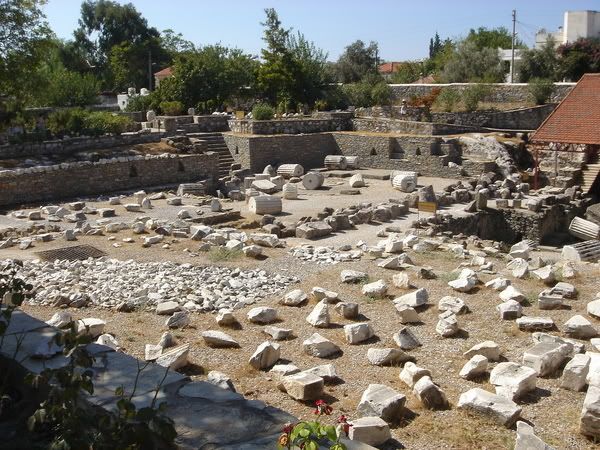
What's left of the Mausoleum
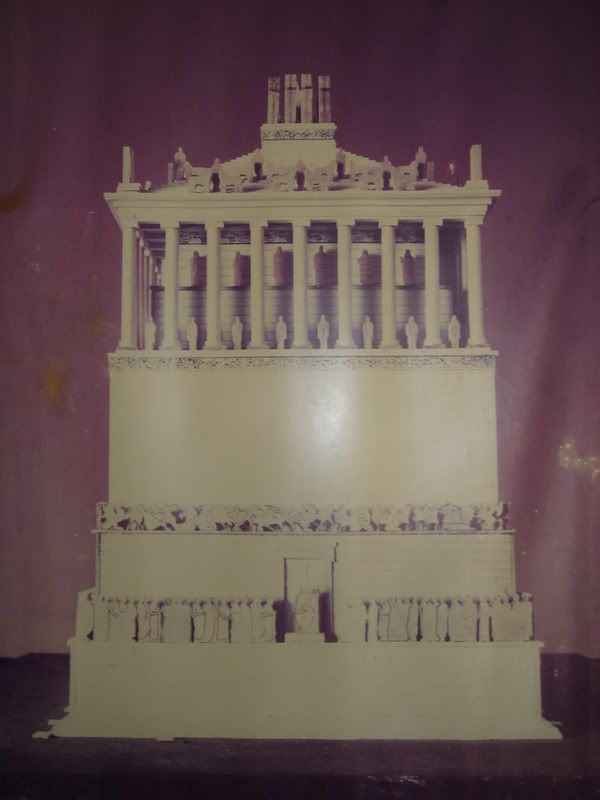
What the Mausoleum used to look like
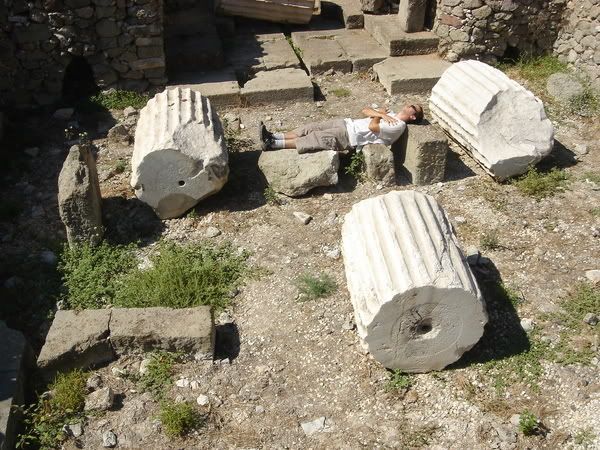
In the burial chamber
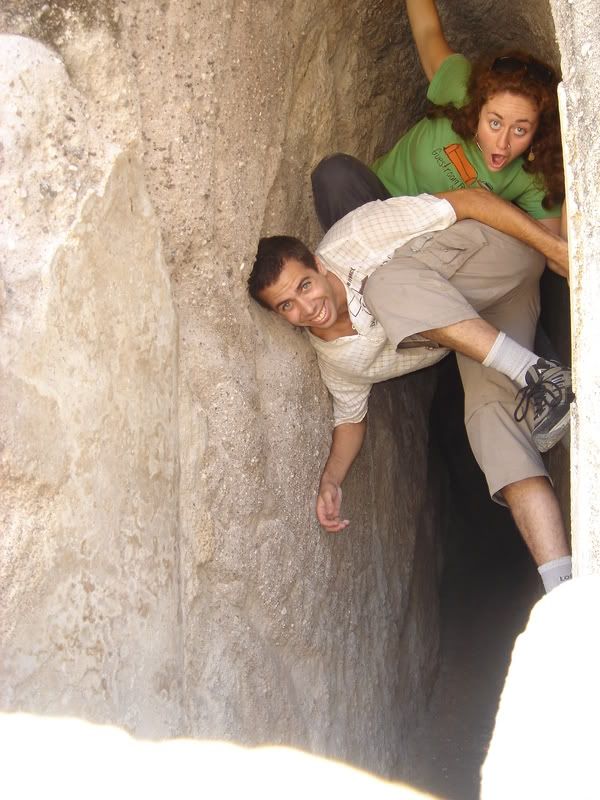
Messing around in a connecting tunnel at the Mausoleum
Visited St. Peter's castle, which is where all that building material went. In addition to being a cool castle with views from the turrets of the yacht-laden waters on one side and the thousands of sugar-cube houses stretching up the hills on the other, it had the world's largest underwater archeology museum. Although it had way too many pots (taken from hundreds of shipwrecks in the thousands of years that ships have been plying thiese waters), it was one of the best museums I've been to, well laid out and really informative. Don't ask me about it any time soon because you'll get an earful of shiplife for the past four millenia. Yes, four millenia: they had artefacts from a bronze age ship that sunk before Moses led the Israelites out of Egypt. I was touching stuff (in the case of some stone tablets) older than the Bible.
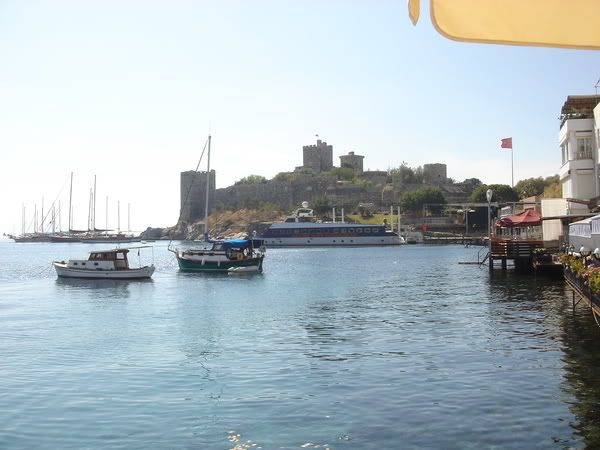
St. Peter's Castle
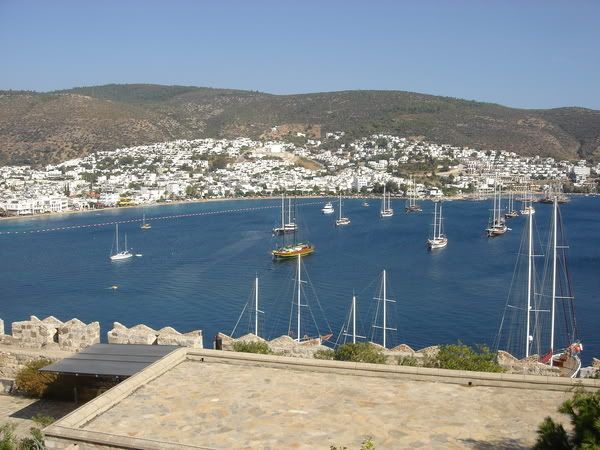
The view of Bodrum from the turrets
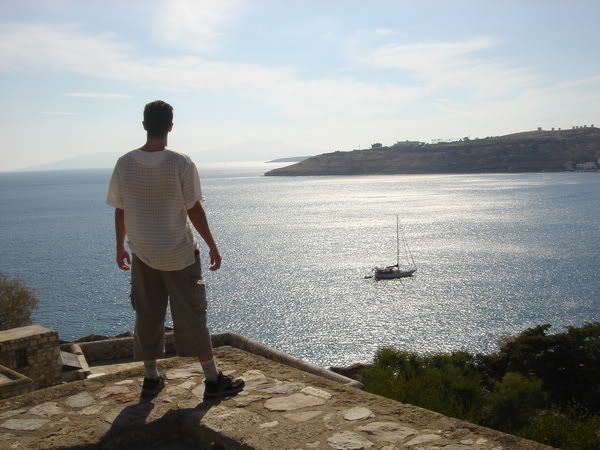
Me, looking over my kingdom
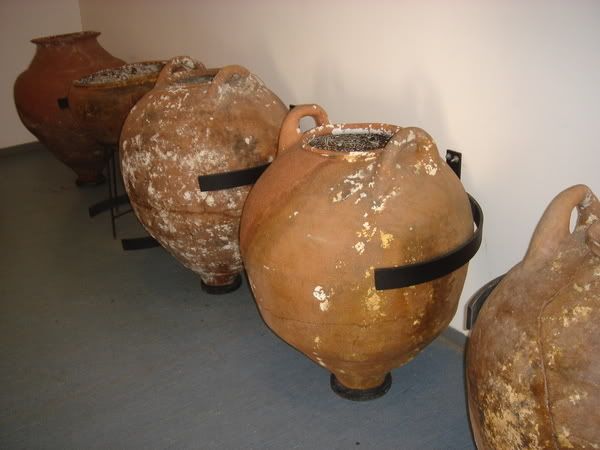
Bronze age pots that are older than the Bible
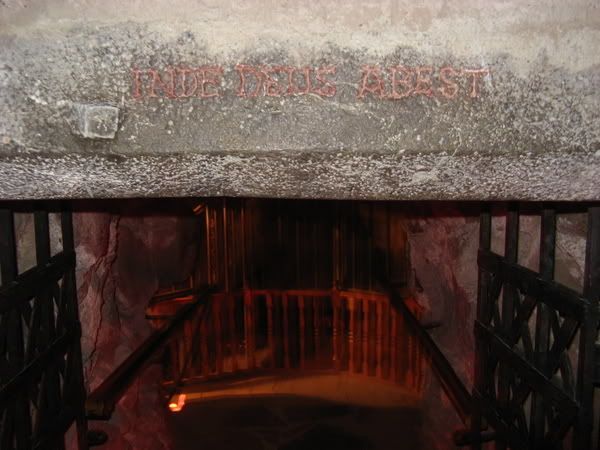
The castle dungeon. The inscription says "God is not here"
Shopped with Sarah because she needed a bathing suit and clubbing clothes, having brought neither on her trip. This was actually more fun than it sounds like, mostly because I finally convinced her to buy a tight red top with "Playboy" written across the chest. If you know Sarah, you will know why this is funny.
Turkish bath was the third to last thing.
Getting dinner, even though it's almost 11 PM is the second to last thing because the restaurants here are open to 5 AM and are especially busy because it's Ramadan and observing Muslims can only eat at night.
The last thing is to hit an open-air club on the beach called Hekeropolis. It's so well-known it gets a paragraph in Lonely Planet and one poster we saw while walking around the city said: "You haven't been to Bodrum if you haven't been to Helekarnos." Tonight is "Crazy Foam Night". I have no idea what it means.
Should be fun.
But first I'm going to take a shower...
